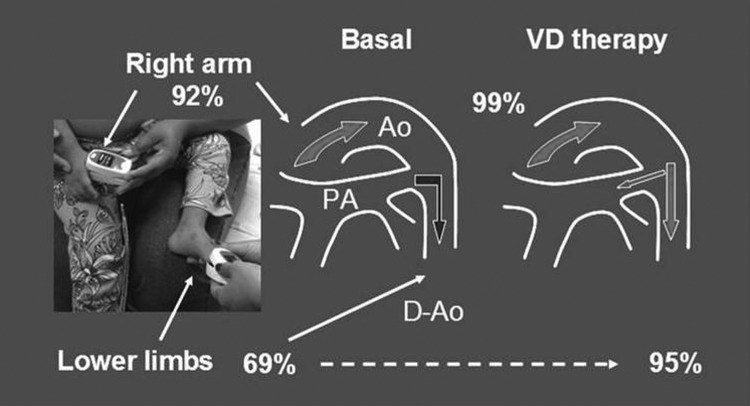Figure 1.
Comparative pulse oximetry in the right arm and lower extremities in a young (2-year-old) patient with patent ductus arteriosus associated with pulmonary arterial hypertension. At baseline, heightened pulmonary vascular resistance causes right-to-left shunting from pulmonary arteries (PA) to the descending aorta (D-Ao), with decreased oxygen saturation in lower extremities compared to that in the ascending aorta (Ao) and the right arm. Successful pulmonary vasodilator therapy (VD therapy) is followed by a decrease in oxygen saturation gradient between the right arm and the lower limbs, indicating a change in the direction of flow across the ductus, from predominantly right-to-left to predominantly left-to-right. Such a response is unlikely to occur in older patients with patent ducts and right-to-left shunting due to pulmonary hypertension.

